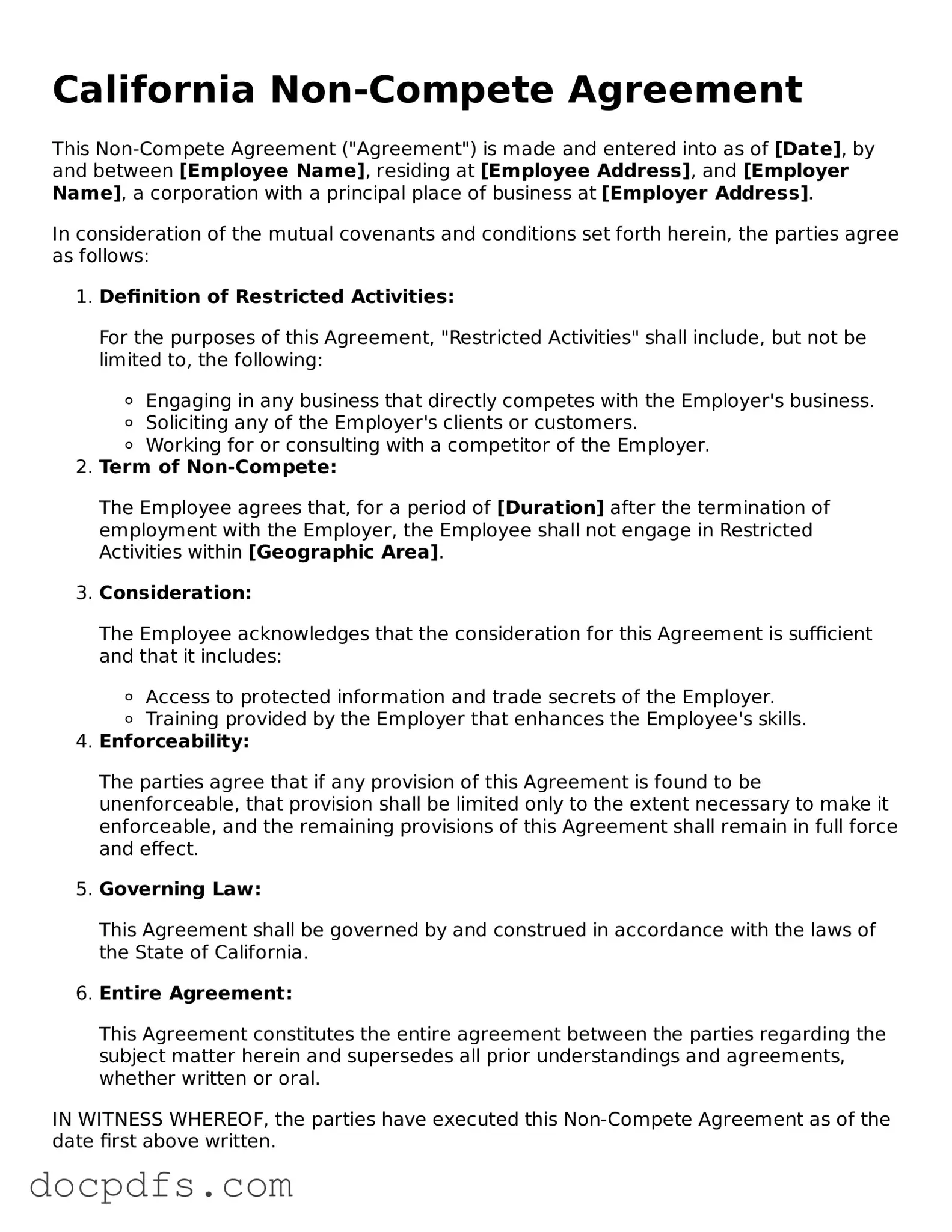What is a California Non-compete Agreement?
A California Non-compete Agreement is a legal document that restricts an employee from working for a competitor or starting a similar business for a specified period after leaving their current employer. However, it's important to note that California law generally prohibits non-compete agreements, making them largely unenforceable in most situations. This means that employers in California cannot prevent employees from pursuing their careers after leaving a job.
Are non-compete agreements enforceable in California?
In California, non-compete agreements are typically not enforceable. The state has a strong public policy favoring employee mobility and the right to work. The California Business and Professions Code Section 16600 states that, with few exceptions, any contract that restrains someone from engaging in a lawful profession, trade, or business is void. This means that most non-compete agreements will not hold up in court.
What are the exceptions to the non-compete rule in California?
While non-compete agreements are largely unenforceable, there are a few specific situations where they may be allowed:
-
In the sale of a business: If an individual sells their business, they may agree not to compete with the buyer in the same market.
-
In certain partnerships: Partners may agree to non-compete clauses as part of their partnership agreement.
-
In the context of trade secrets: Employers can protect their trade secrets through confidentiality agreements rather than non-compete clauses.
What should I include in a non-compete agreement?
Even though non-compete agreements are generally not enforceable in California, if you are considering one for situations where it may apply, consider including the following elements:
-
Definition of the scope of the restriction: Clearly outline what activities are restricted.
-
Geographic area: Specify the geographical limits of the non-compete.
-
Duration: Indicate how long the restrictions will last after employment ends.
-
Consideration: Mention what the employee receives in exchange for agreeing to the terms.
Can I still protect my business without a non-compete agreement?
Yes, there are several ways to protect your business interests without relying on non-compete agreements. Consider using:
-
Non-disclosure agreements (NDAs) to safeguard sensitive information.
-
Non-solicitation agreements to prevent former employees from poaching clients or employees.
-
Strong employee training programs that emphasize the importance of confidentiality and loyalty.
What should I do if my employer asks me to sign a non-compete agreement?
If your employer asks you to sign a non-compete agreement, it is essential to understand your rights. Consider the following steps:
-
Review the document carefully. Understand the terms and how they may affect your future employment.
-
Consult with a legal professional who specializes in employment law to evaluate the agreement.
-
Negotiate terms if necessary, especially if the agreement seems overly restrictive.
What are the consequences of violating a non-compete agreement?
If a non-compete agreement were to be enforceable in California and you violated its terms, several consequences could arise:
-
Legal action: The employer may sue for damages or seek an injunction to prevent you from working.
-
Financial penalties: You could be liable for any losses the employer claims to have incurred due to your violation.
-
Reputation damage: Violating such an agreement may harm your professional reputation and future job prospects.
